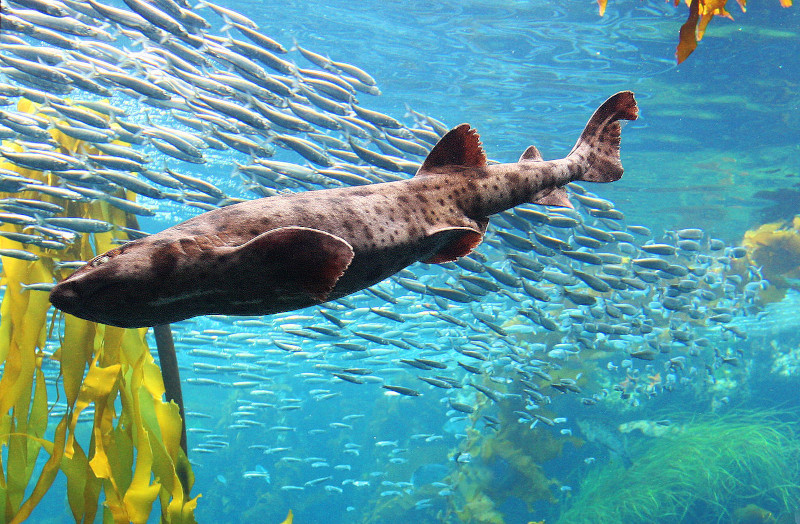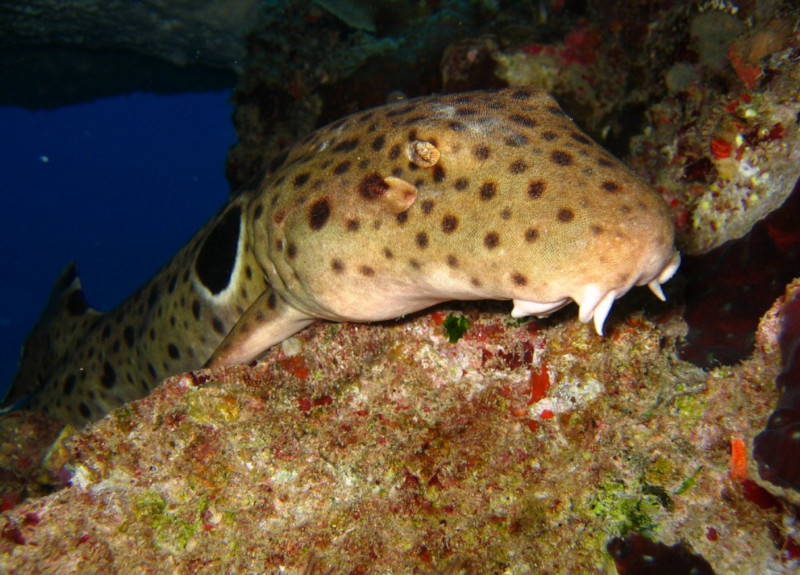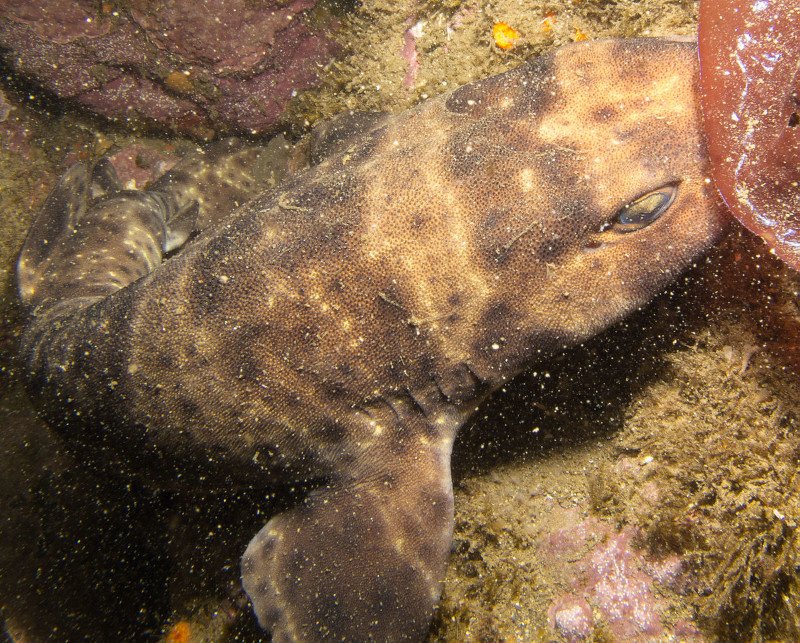Swell Shark Facts
- This highly intriguing species of fish, most frequently known by the common name of the Swell Shark, is a variety of what’s collectively called catsharks. Interestingly, for the moment, this awesome product of Nature and evolution has no other regularly used general name.
- Scientific professionals, meanwhile, tend to refer to the impressive creature by its formal, technical name. That, however, is the somewhat hard to pronounce term of the Cephaloscyllium ventriosum. By either term, though, it’s a fascinating type of fish.
- The American zoologist, Samuel Walton Garman, made the first formal recognition of the animal as a separate and distinct species. He further accomplished this scientifically noteworthy action in the year 1880. A certain amount of confusion surrounds it, though.
- That’s because, despite the fact that he made the initial acknowledgement of the species, he originally assigned it the different name of the Scyllium ventriosum. The renaming of the amazing animal to the appellation in current use only took place many years later.
- Fortunately for the unique Swell Shark, it appears to be maintaining a population base that’s both sizeable and relatively stable. This fortunate situation also seems to hold true throughout the entirety of its range. The IUCN, therefore, lists it as a Species of Least Concern.
- Neverthless, it does face at least some concerns, however. Though not actively fished commercially, it’s nonetheless occasionally caught as bycatch. The greatest threat to its existence, though, most likely comes in the form of climate change, like other species.
Related Articles
Swell Shark Physical Description
The fabulous Swell Shark certainly garners its proper share of attention from those who appreciate Nature, and justifiably so. The marvel does not do so, however, due to sheer physical size, like some of its many relatives. That’s because it evolved as a relatively diminutive shark variety.
Much like many of its kindred around the globe, this amazing fish displays a moderate degree of the physiological characteristic of sexual dimorphism. In its particular case, though, this evolutionary trait manifests itself in terms of sheer overall physical size, not in simple appearance.
More specifically, the females of the uniquely evolved species attain a slightly greater average physical length than their male counterparts. The overall difference, however, generally remains comparatively minor. Mature adults of the species typically reach body lengths of 35.4 in (90 cm).
Exceptional individuals of both genders do occasionally occur, though. These outstanding specimens sometimes reach lengths measuring up to as much as 43.3 in (110 cm). Although reports of larger specimens do exist, no reliable confirmation of such individuals currently exists.
The bodies of each gender of the remarkable Swell Shark also develop in a visually extremely distinctive manner. Both sexes develop broad, flat heads. The eyes further provide a distinctive look, being gold in color, with nictitating eyelids. The gills tend to be quite small and tight in nature.
The amazing creature also presents an intriguing pattern of coloring. This typically consists of a brownish-yellow background, with white and brown spots on much of the body. These markings do not appear on the fins, however. The overall color scheme further tends to darken with age.
- Kingdom: Animalia
- Phylum: Chordata
- Class: Chondrichthyes
- Order: Carcharhiniformes
- Family: Scyliorhinidae
- Genus: Cephaloscyllium
- Species: C. ventriosum
Swell Shark Distribution, Habitat, and Ecology
Although its population appears to be stable, the Swell Shark does not possess an extremely extensive range of habitation. That’s due to the fact that the truly distinctive small shark only inhabits a limited portion of the Pacific Ocean. That consists of a small part of the eastern section.
To the north, this endemic zone of habitation extends up to the marine region located just off the coast of central California, in the United States. From there, though, it extends sharply south. The southern extremity of its primary range reaches to about the southern part of Mexico.
There’s also a very small, completely isolated population of the fish that exists separately. Incredibly, that isolated subgrouping appears off the coast of Chile. This increases its overall range, but leaves in broken. In all parts of its range, however, its own nature limits its potential expansion.
That holds true due to yet another preference the awesome creature regularly displays in terms of its choice of environment. This marvel prefers to spend most of its time either at or near the floor of the ocean. But it also prefers this to be in shallow regions, where the depths remain minor.
The known depth range of the Swell Shark also extends fromapproximately between 16.4 – 1,499 ft (5 – 457 m). The majority of specimens actually live between 16.4 – 121.4 ft (5 – 37 m), however. There, it generally makes its home along algae-covered stony bottoms, and hunts crustaceans.
Here, the unusual fish spends its daytime hours hiding from its own predators. Its own threats are quite numerous, but it evolved the defense which gives birth to the common name. If threatened, it can draw enough water into its body to swell in size, making it a much more difficult target.
Species Sharing Its Range
Check out our other articles on 4 Wondrous Asian Waterfalls, Harpy Eagle, Mount Olympos, Nepenthes pervillei, Honey Badger, Orange Oakleaf, Jackson’s Chameleon, Texas Blind Salamander




